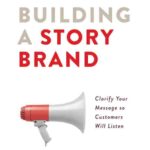Back in 2013, I first wrote about a global Nielsen study that revealed that when it comes to advertising, consumers placed their trust most firmly in one thing: word-of-mouth recommendations from people they knew. It was simple, human, and authentic. Fast forward to today, and despite the rise of social media, influencer marketing, and advanced targeting, the story hasn’t changed all that much.
In the summer of 2025, we take a look at what recent data says about trust in advertising—and whether your marketing efforts are aligned with what today’s consumers actually believe.
Word-of-Mouth: Still the King of Trust
The most recent data confirms what many savvy business owners already suspected: personal recommendations still carry the most weight.
According to Nielsen’s Global Trust in Advertising study and additional 2024–2025 research from sources like DemandSage, Business News Daily, and ElectroIQ:
- 92% of consumers trust recommendations from friends and family over all other advertising methods.
- 88% of consumers trust online reviews just as much as personal recommendations.
- Word-of-mouth marketing influences 20% to 50% of all purchasing decisions and leads to 5× more sales than paid media.
The takeaway? The most powerful form of advertising isn’t something you can buy. It’s something you earn through customer experience, service, and trust.
Related Post: How to Create an Active Referral Program
Updated Trust Rankings in 2025
Here’s a breakdown of how various forms of advertising stack up in the latest available rankings:
Very High Trust (80–92%)
- 92% – Recommendations from people they know
- 88% – Online reviews from other consumers
High to Moderate Trust (60–70%)
- 69% – Branded websites
- 67% – Editorial content (newspaper articles, etc.)
- 63% – Television ads
- 60% – Print ads (newspaper/magazine)
Moderate to Low Trust (40–59%)
- 57% – Outdoor ads and billboards
- 55% – Radio ads
- 48% – Online video ads
- 47% – Ads served via search engines
- 46% – Ads on social networks
- 43% – Mobile display ads
- 42% – Online banner ads
- 37% – Text ads on mobile phones
While there’s been minor movement in some of these categories over the past decade, the general trend remains: the further an ad format is from a personal or peer-based endorsement, the lower the trust.
Why This Matters for Your Marketing Strategy
If your advertising strategy is heavily dependent on digital ad placements like display banners or search ads, you’re not alone—but you may be fighting an uphill battle in terms of trust and engagement.
Related Post: Ad Fraud – The Hidden Way Ad Tech Is Stealing Your Ad Dollars
That doesn’t mean you should abandon paid advertising altogether. Instead, use these formats to support your more trustworthy channels, like:
- Referral programs that reward word-of-mouth sharing
- Testimonial videos and case studies
- Online reviews, especially Google Business Profile reviews
- Thought leadership content (e.g., guest articles, blog posts, podcast appearances)
In short, your strategy should focus on creating earned trust—then amplifying it with paid support.
The Rise of User-Generated Content and Social Proof
Consumers increasingly turn to user-generated content (UGC) and social proof as validation before making buying decisions. A short TikTok or Instagram Reel from a customer can often outperform a polished ad campaign.
According to Nielsen, Gen Z and Millennials are particularly sensitive to perceived authenticity. They’re more likely to trust a 20-second customer shoutout than a multimillion-dollar celebrity endorsement.
So ask yourself: Are you encouraging your customers to tell your story for you?
What Hasn’t Changed: The Decline of Low-Trust Formats
While some digital ad formats have gotten smarter—thanks to AI, retargeting, and better personalization—the trust numbers for:
- Banner ads,
- Pop-ups, and
- Mobile text ads
have largely stayed stagnant or only slightly improved. Consumers are increasingly ad-fatigued and are turning on tools like ad blockers or ignoring digital noise altogether.
Even platforms like YouTube, which offer “skippable” ads, can’t match the power of a friend’s genuine recommendation.
Final Thoughts: Trust Is Earned, Not Bought
Marketing in 2025 is as much about building relationships as it is about buying impressions. The data is clear: if you want your message to stick, you need others to say it for you.
Start by delivering amazing value, ask for reviews, and encourage customers to share their success stories. That’s the kind of advertising money simply can’t buy—but it pays the biggest dividends in the long run.
How does your advertising strategy stack up against the trust factor?












